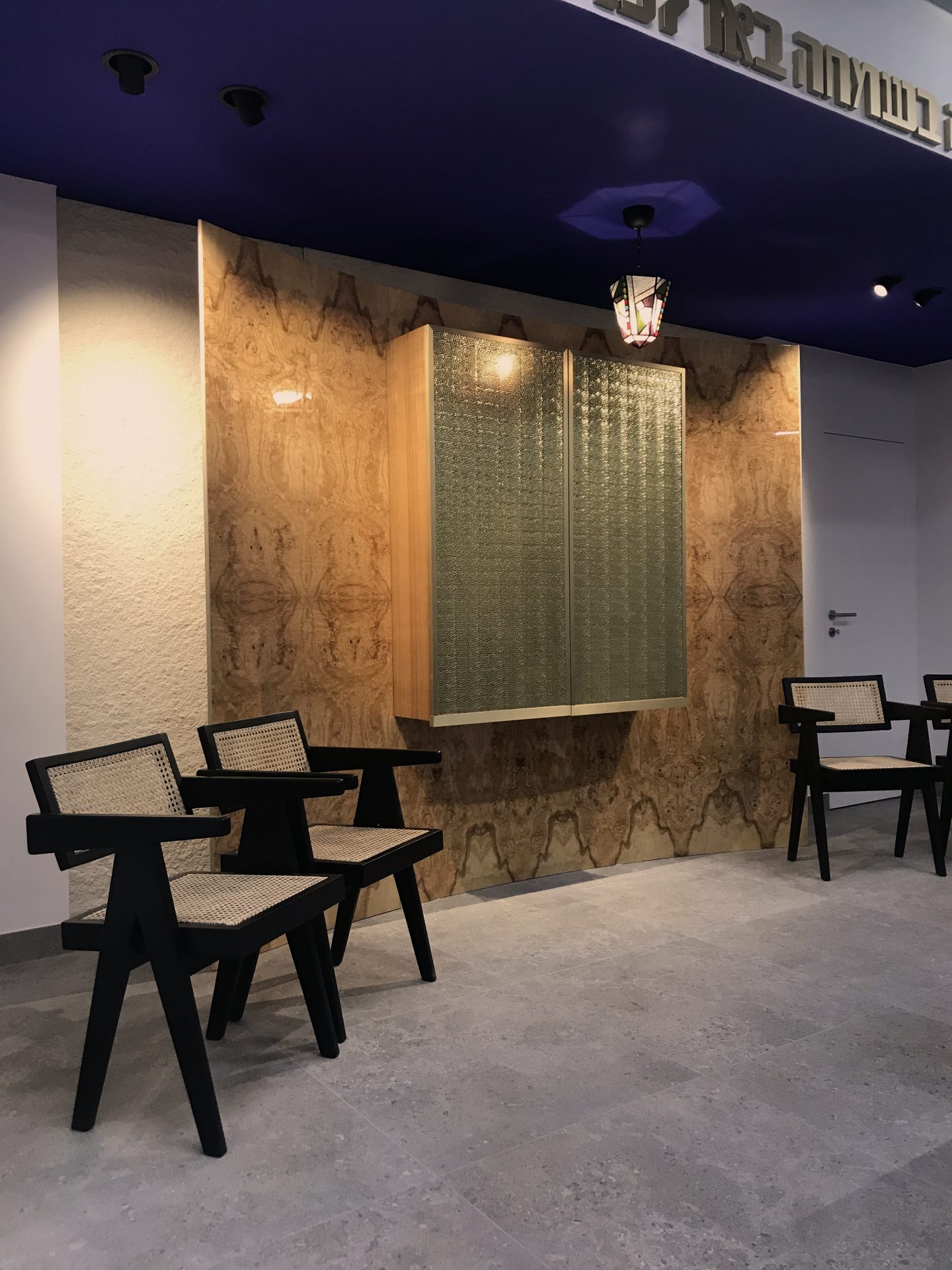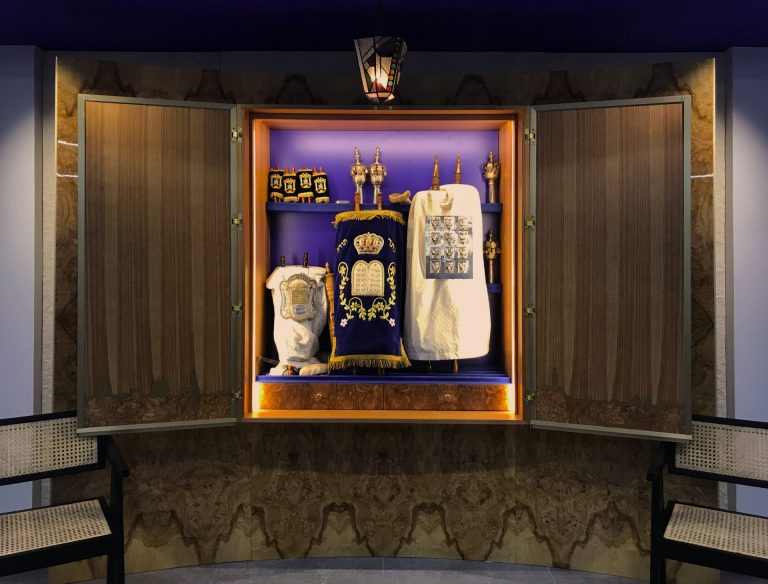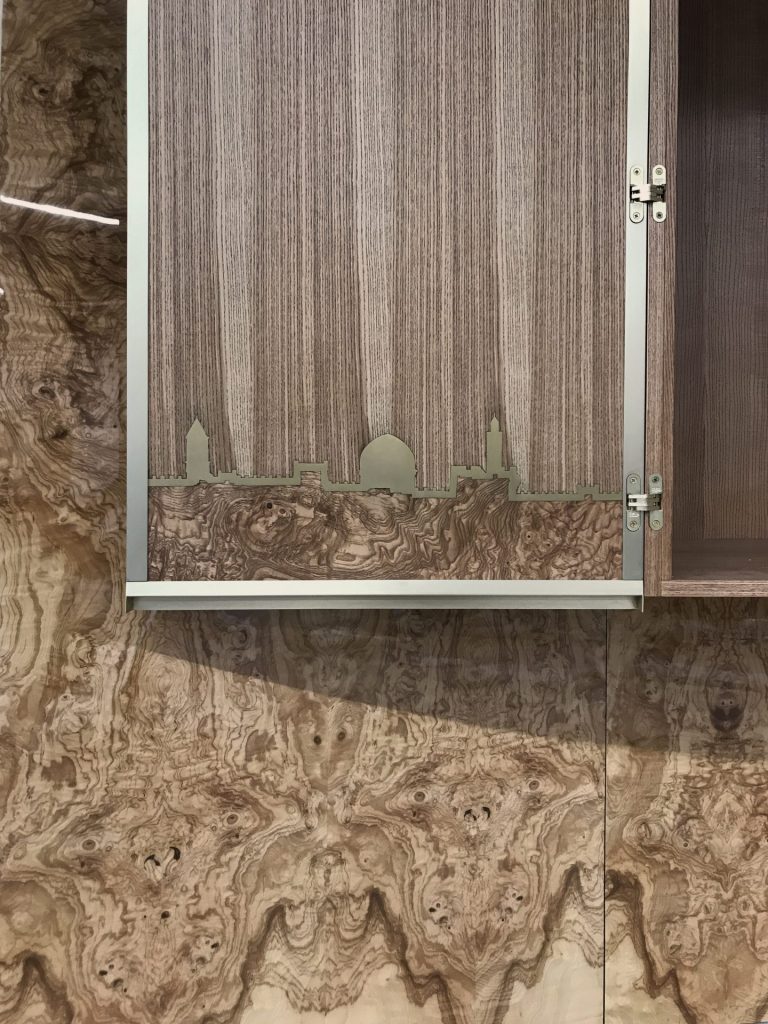
The heart of the sanctuary in Kehilat Gesher’s new home is now officially beating. A magnificent ark, holding the community’s Torah scrolls, presides over the bimah, or stage, where Rabbi Tom Cohen currently leads limited shabbat services while Covid restrictions remain in place. A stunning mix of olive burl wood and hammered brass, the ark was designed by Bruno Quijano, one of the architects behind the renovations inside Kehilat Gesher’s new home.
As usual, Rabbi Tom was a source of inspiration and ideas. Quijano also received continuous support from the ‘Josué’ committee on KG’s board, as well as architect Isabelle Cyr, his partner on the renovation project. But one of his strongest inspirations was the sea. The Mediterranean, to be exact. The water, the land, the shores of Israel all influenced the choice of materials and colors that light up the décor, in particular that of the ark, the Aron HaKodesh. Olive wood, omnipresent in the region, plays a major role, as does a deep ultramarine blue—International Klein Blue—first mixed by French artist Yves Klein. That luminous color flows across the dropped ceiling of the bimah and inside the ark, lined with soft fabric to protect its contents.
The ark itself hangs on a wall of textured concrete the color of the walls of Jerusalem. With its luminous doors of hammered brass, the olive-ash veneer cabinet shimmers under the Nir Tamid, the “eternal light” or sanctuary lamp. A curved panel of olive burl wood “hugs” the back of the ark, in the words of Quijano, who chose this precious wood not just for its beauty, but also for its symbolism. Derived from the roots of ancient olive trees and prized for its rich patterns and kaleidoscopic swirls, the wood “reminds us not only of the tree of life, but also of our roots, which carry the Torah in its arms.” Light, reflected in the colors and the olive wood, is most apparent in the ark’s golden doors, whose hammered surface will develop a patina over the years. “The beaten surface reminds us that even through ‘suffering’ we can find beauty,” says Quijano. Four chairs, modern replicas of a design by Le Corbusier, bookend the cabinet.
It was Rabbi Tom who came up with the idea of putting the skyline of Jerusalem on the inside of the ark’s doors, which has been realized in brass and olive wood marquetry. He also helped design the custom font for the letters that spell out the words above the bimah, a quote from Psalm 100:2: “Serve the Eternal with gladness; come before God with joyful songs.” Anyone who has attended services at Kehilat Gesher, where singing is central to every shabbat, will know how appropriate that citation truly is.
But not all Quijano’s inspiration comes from spiritual sources. “I don’t deny that I’ve also been inspired by the great masters of Italian architecture of the ‘40s and ‘50s, Gio Ponti and Gustavo Pulitzer, especially their cruise ship interiors, trying to achieve a sober and elegant result,” says Quijano, who became an architect in Italy, studying in Milan.
Which brings us back to the sea. “I find that this large space with its bay windows and skylights looks a little like a ship,” says Quijano. In fact, the artisans who constructed the ark, of the Italian firm CM Contract, specialize in the interiors of yachts and cruise ships. “They really helped us find the best solutions for a result that was identical to what I imagined, all from a simple hand-drawn sketch.”
Soon the sanctuary will be ready for its “passengers,” and when the new KG opens its doors and the congregation flows in, Rabbi Tom and Bruno Quijano will be there to welcome them aboard.

